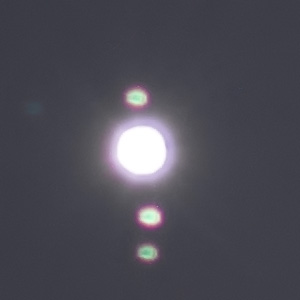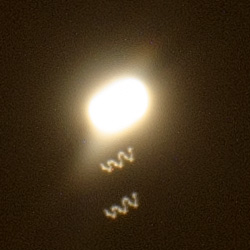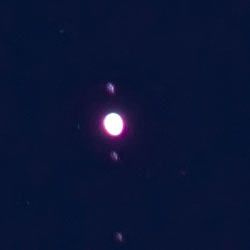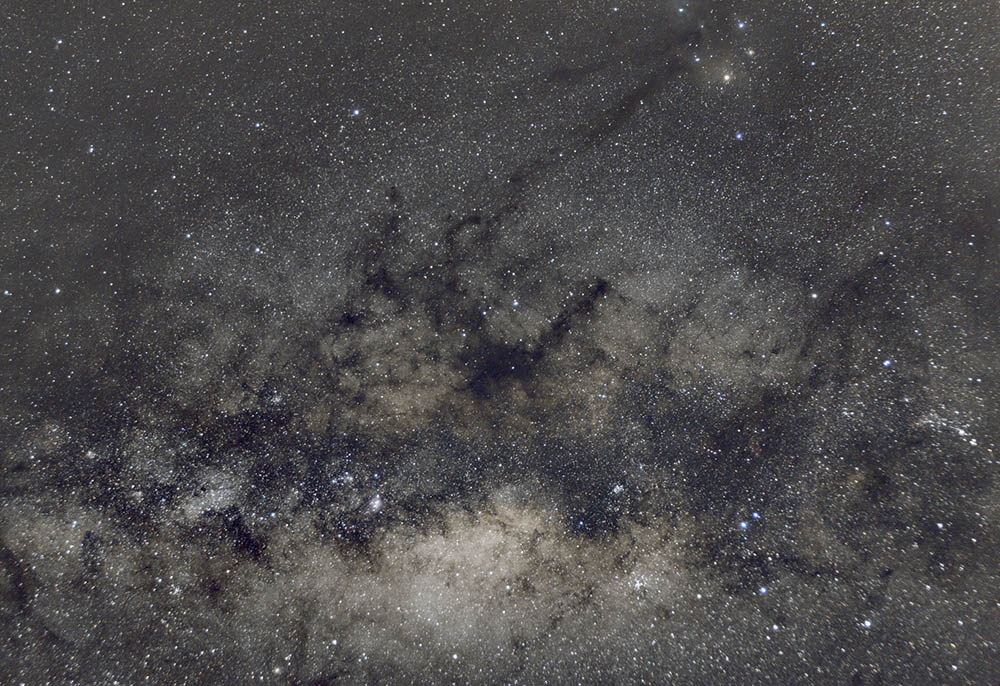

Common issues you may encounter when using a Barn Door Tracker.
Please make sure that the polar axis is accurately aligned. You can take two images to observe the movement of the star points and use drift alignment method to improve the accuracy of the polar axis.
As long as you can accurately align the polar axis, you can have longer single exposures. However, we do not recommend pursuing long exposures with non-cooled astronomical cameras. Apart from the time-consuming drift alignment method for polar alignment, regular digital cameras are not suitable for longed exposures because they can introduce more thermal noise. Additionally, extremely long exposures would also require more time to capture dark frames.
For telephoto lenses of 135mm or longer, exposures ranging from 15s to 60s can be used effectively. Multiple exposures can be stacked to simulate a longer exposure.

Below are case by case for star distortion and solutions (Using 135mm, 200mm, 500mm lens) :








I have personally tested the load capacity to be approximately 1.7kg (Nikon D5200 + Nikon 300mm F4.5). If we consider only the load capacity of the motor for elevation, I have tested it to be around 2.3kg. However, such a heavy setup would result in noticeable vibrations and make it difficult to control the camera's orientation. It also becomes challenging to locate celestial objects, making it unsuitable for photography. Additionally, the polar alignment may change due to the excessive weight of the camera, resulting in trailing (the tripod may loosen due to the weight, and 3D materials may have issues with heavy loads).
The load capacity primarily depends on the weight for elevation. If you can adjust the camera angle to the lightest load for elevation, then the load capacity is not an issue. It is recommended to have an elevation load of 300g or less.
We recommend using fixed focal length lenses below 200mm, especially the 135mm F2.8 / 200mm F4 (F2.8). If you need to use a focal length of 300mm or more, we suggest using a reflex mirror to reduce weight or using a 1.4x teleconverter to increase the focal length. If you must use a focal length of 300mm or more, please reduce the exposure time per shot to avoid star trails.
Yes, but due to weight restrictions, it is recommended to use a lightweight reflex mirror lens or a 1.4x teleconverter. Long exposure times are not recommended due to stability issues and the need for precise polar alignment.




We have tried using metal for large gears and have even had them made by a CNC company, but unable to achieve smooth results. Therefore, we decided to 3D print them ourselves. When operating the gears, please handle them with care and do not tighten the spring too much, as this can cause the gears to break down faster. If the gears have already broken down, please contact us to purchase replacements.
DSD Maximum recording time is 100 minutes per activation. The rod allows around 2.5 hours of recording. To exceed 100 minutes without readjusting, Please hit controller stop button and restart it, you will make it run another 100 min peroiod. Beware of flipping and ensure sufficient rod length for continuous shooting.
Factors such as light pollution, weather, lens quality, focusing, and post-processing can impact the quality of your photos. Choose clear nights without moonlight and locations with minimal light pollution for better astronomical shots.
Deep-sky objects require significant post-processing, including stacking and various image adjustments. This is an essential skill for astrophotography. Utilize Google search to find relevant post-processing techniques.
For stacking images, you can use Sequator, DSS, or Siril. We highly recommend Siril, which is a particularly powerful software for stacking and pre-processing.
Siril Manual
Siril Manual image stacking tutorial (optional processing of related dark frames, bias frames, and flat frames).
Siril Download
DSS Download
Sequator Download
In post-processing adjustments, you can use: GIMP。
All of the above mentioned software options are free to use.

This is the original image taken with a 60-second exposure.
ISO1250 , F4 , 60sec, Nikon 24mm lens with Olympus E-M10

This is the result after stacking 51 minutes of exposures, and the galaxy is now clearly visible.

This is the result after stacking and post-processing, enhancing color contrast and reducing noise.
Dark frames, bias frames, and flat frames are all captured to improve image quality. When combined with suitable software, they help capture astronomical photos with more details and less noise.
Dark :
Dark frames are images captured with the camera lens or telescope covered, typically with the same exposure time as your actual photos. They capture the sensor noise and thermal fluctuations present in your camera, helping to reduce noise during post-processing.
Bias :
Bias frames, also known as zero frames or offset frames, are images captured with the shortest possible exposure time and the lens or telescope fully covered. Bias frames capture the readout noise and electronic noise of your camera sensor.
To capture bias frames, keep the lens or telescope covered and set the shortest possible exposure time. Capture multiple bias frames to ensure accurate noise reduction during post-processing.
Flat :
Flat frames are images captured to correct for the uneven illumination and dust spots present in your optical system. They help in equalizing the brightness across the image and reducing artifacts caused by dust particles on the lens or sensor.
To capture flat frames, cover the lens or telescope with a diffuser such as a white T-shirt or a specialized flat panel. Capture multiple images with the same exposure settings as your actual photos, making sure the entire frame is evenly illuminated.
There are tutorials online, GOTO can help you locate any celestial object you want to photograph."
Without star tracking equipment, long exposures capture star trails due to the Earth's rotation. With star tracking equipment, it follows the rotation of celestial bodies and captures details of deep sky objects.
If you have any questions about the Barn Door Tracker, feel free to email me (James).
email : deepskydoor@gmail.com